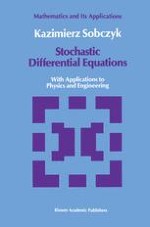1991 | Buch
Stochastic Differential Equations
With Applications to Physics and Engineering
verfasst von: Kazimierz Sobczyk
Verlag: Springer Netherlands
Buchreihe : Mathematics and Its Applications (East European Series)
Enthalten in: Professional Book Archive
